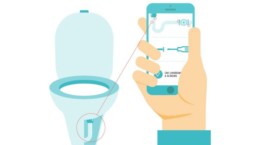Water is a precious resource. Yet, global statistics reveal that we are not very good at recycling it and treating it before it’s released back into nature. In celebration of World Water Day, let’s take a closer look at some innovative solutions that save the precious droplets for people, profits and the planet.
Globally, it’s estimated that around 80 per cent of wastewater is released back into our environment untreated. This is both a hazard for our health and our ecosystems. Contaminated drinking water leaves communities at risk of dehydration and disease – approximately 800,000 people die every year from drinking contaminated water. Not only that, untreated wastewater impacts over 245,000 km2 of marine ecosystems, which affects fisheries, food chains, and ultimately what ends up on our plates.
As the global population is growing rapidly, as does our thirst – demand for water is expected to increase by almost one-third by 2050. What’s ahead of us is a flood of global challenges that will be difficult to water down.
The overall solution is simple: we need to manage our water better. In particular we need to rethink the concept of “wastewater.” As stated by Stephen Uhlenbrook, Coordinator of the UN World Water Assessment Programme:
“The entire notion of wastewater is itself somewhat of an oxymoron. Once water has been used for any purpose, it should not be seen as ‘wasted’.”
This observation, that wastewater is in fact untapped water resources, resonates well with some of the innovations that Sustainia has identified over the past years. Entrepreneurs from all corners of Earth have realized the great business potential in solutions which manage our water more efficiently and responsibly. Moreover, Sustainia’s Global Opportunity Report 2017, made in collaboration with DNV GL and UN Global Compact, revealed that the majority of business leaders globally acknowledge the environmental, social and commercial potential in smart water technology. The market for smart water management alone is estimated to grow from $8.46B in 2016 to $20.10B in 2021 — a promising prospect for current and future businesses in the water industry.
To understand what exactly clever water management entails, let’s take a closer look at some innovative solutions here on the Explorer that get the most out of our precious H2O:
Recycling toilet wastewater

An estimated 2.4 billion people lack access to safe and adequate sanitation, and human waste often finds its way to the groundwater, polluting essential water resources. To tackle this problem, US-based project Seva Sustainable Sanitation has developed an electrochemical toilet that treats and disinfects wastewater, so that locals can reuse it for flushing and irrigation. Powered by off-grid solar panels, the toilet clarifies and sterilizes urine and removes macronutrients such as carbon, nitrogen, and phosphorus. Moreover, the toilet has a mobile-based maintenance guide, which allows communities to do repairs themselves. This autonomous sanitation solution really makes a difference for communities in developing countries, which have limited access to water and difficulties keeping scarce water reserves free from human waste contamination.
Converting urban wastewater into energy
What flushes down the drain can be regained and reused as not only water resources, but also energy resources. For example, the city of Johannesburg has successfully created a project which retrieves methane from wastewater and landfill waste, and converts it into energy to use on treatment plants. The project is the result of a public-private partnership wherein the city provides the rights to the landfill and wastewater gas to the developer, who in turn finances and operates the project. This requires minimum efforts from the city, who receive royalties from the private developer. Yet another clear example of how the word “wastewater” does not represent the merits of the resource.

Mozzarella wastewater becomes a resource
Everyday, Arla Foods receives 2.2 million litres of milk in their cheese dairy in Rødkærsbro, Denmark. Milk is mainly water – 85% water in fact. Once milk is transformed into mozzarella, a large proportion of that liquid is leftover as a byproduct, what the facility has nick-named “cow water”. This cow water poses a challenge, as it contains high levels of nutrients and contaminants and therefore cannot be safely reused or released into the environment without treatment.
Grundfos, the world’s largest pump manufacturers, has created a solution called the BioBooster to solve this problem.The Biobooster is a filtration unit that cleans the wastewater at its source through biological processes and using ultrafiltration membranes that remove bacteria. Through the introduction of this new technology, the cow water is no longer a wasted byproduct, and can be reused in the facility or safely released into a nearby river without contaminating the environment.
These solutions are just a few of examples of the great water innovations out there. Hopefully, more businesses will recognize the huge business potential of wastewater and water management, and the big role they can play in achieving the Global Goal 6 — making clean water available for everyone by 2030.
Discover more groundbreaking water solutions right here on the Global Opportunity Explorer.
Author: Joachim Marc Christensen & Michelle Gordon

